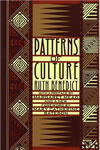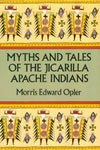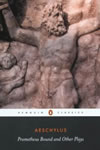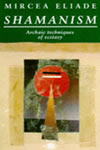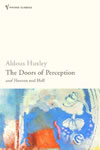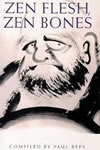In North America, a native hunter fasts when seeking a vision of some animal or person who will instruct him. This familiar may direct a boy to become a shaman, a hunter, or a warrior. The hunter may fast again throughout his life when he is dissatisfied, and seeks new insight and direction. Misfortune signifies a lack of supernatural favour, insufficient power. Such hunters would offer their finger joints — sometimes all of those not used to draw a bow — as sacrifices so that they might receive insight.
The planting tribes, such as the Hopi and the Zuni, centre their religious life around ‘the rich and complex ceremonies of their Masked Gods’. Among such Pueblo peoples the greater part of waking life can be spent in such rituals: ‘In such a society there is little time for individual play’.In hunting societies the shaman dominates. He has achieved his powers by ‘a personal psychological crisis. The spiritual visitants who came to him in vision had never been seen before by any other; they were his particular familiars and protectors’. On the other hand, ‘The priest is the socially initiated, ceremonially inducted member of a recognized religious organization, where he holds a certain rank and functions as the tenant of an office that was held by others before him.’ Priests serve the same deities generation after generation.
Campbell uses a Jicarilla Apache story to show that as cultures turn from hunting to agriculture, so they incorporate their earlier teachings into a planting mythology. Visionary individuals are subsumed into the group. The older beliefs will remain embedded in the new, however, palimpsests through which fundamental beliefs may still appear.Campbell now turns to the Wild Gander of his chase: ‘The highest concern of all the mythologies, ceremonials, ethical systems, and social organizations of the agriculturally based societies has ever been that of suppressing the manifestations of individualism; and this has been generally achieved by compelling or persuading people to identify themselves not with their own interests, intuitions, or modes of experience, but with archetypes of behaviour and systems of sentiment developed and maintained in the public domain.’
In India this became the ‘unconditional submission to the archetypes of caste’, the notion that individuals rise through a hierarchy, life by life, and must submit to Dharma, the cosmic law. Campbell exemplifies this extreme willingness to submit by the sacrifice of the wife who climbs on to her husband’s funeral pyre.
In Greek myth the Titans — remnants of the earlier belief — were chained and imprisoned. The German gods also gaoled their predecessors. That great representative of individualism, Prometheus, was bound for giving fire to humanity. He became an essential symbol of the Renaissance, when the attempt was made to put man back at the centre of creation. The old shamans are resident in the trickster heroes — the African Hare; Brer-Rabbit, Coyote, Raven among native Americans; and the dark figure of Loki in Norse myth. Such tricksters are often credited with creating the world by their inheriting cultures. The Great Hunt began in the far, far reaches of prehistory. It is continued in unbroken sequence into the tribes of the North American Plains, right up to the massacre at Wounded Knee in 1890. During this immense period of time, the trance of the shaman has persistently been likened to the flight of a bird. Mircea Eliade showed that the common talent of the shaman ‘is that of throwing himself into a trance at will’. Drum rhythms are seen as the beat of wings that elevate the shaman’s spirit and invoke his familiars. In trance the shaman flies to the ‘upper world’, or descends — in animal form — to the ‘world beneath’. As already mentioned, the first image of that universal symbol, the swastika, was found inscribed on the wing of a bird. Siberian shamans still wear bird costumes, as did their predecessors tens of thousands of years past.Campbell points out that in many places the ‘soul is pictured as a bird, and birds commonly appear as spiritual messengers: angels are modified birds. But the bird of the shaman is one of particular character and power, endowing him with an ability to fly in trance beyond all bounds of life, and yet return.’ The shaman is more than a visitor to the invisible realms, he is ‘a favored scion’.
In Hinduism, master yogis are termed wild ganders, signifying their ability to identify themselves with the ‘ultimate, transcendent yet immanent ground of all being’.
Religious symbol can signify reference and engagement, as in the ‘social mandala of the hieratic city state’, where everyone has a place in the whole. The aim is to fit in, each member of the community engages with the symbol, which becomes a shield against the unknown. In contrast to this demand for order, religious symbol can actually signify ‘disengagement, transport and metamorphosis’ catapulting the seeker away from the symbol, rather than drawing him in. The Mundaka Upanishad compares the sound AUM to a bow, where the soul is an arrow and Brahman (the absolute, the ground of all being) is the target. ‘The rhythm of the shaman’s drum is the syllable AUM, his trance is the bird-flight of the feathered arrow. His mind, disengaged from the protection of the symbol, is to meet directly the mysterium tremendum of the unknown.’
The unknown can be distinguished in two forms: that which is relatively unknown, and that which is absolutely unknowable. Campbell has already discussed the Indian term paroksa, beyond the eye’s reach, and applies this to the relatively unknown — that which can be apprehended in dream. Individually this can also be seen as the unconscious; sociologically ‘as the dynamics of history’; and cosmologically ‘by the forces of the universe’.
Beyond this is the absolutely unknowable, the Tao. It cannot be caged in words, or in any way presented by one person to another. Campbell quotes Thomas Aquinas ‘then alone do we know God truly, when we believe that he is far above all that man can possibly think of God’. The Kena Upanishad says that it is ‘above the unknown’. Campbell adds ‘This is the category or degree of the unknown to which all of the high mythologies and high religions are ultimately directed. It is recognized, however, to be absolutely ineffable, a plenum of unknowability, inexhaustible in its dark.’
There are two attitudes towards this mystery — the terror and submission known as piety, or the release known in Sanskrit as moksa. Piety does ‘not seek to penetrate’, but engages with the symbol. In moksa, the mystic is disengaged from the symbol and propelled outward: disengaged.
The shaman may travel to the sphere of his ancestors, but this is still the relatively unknown. The mystic can travel beyond in ‘the flight between two thoughts’. A tradition of such disengagement has existed in Asia at least since the Indian Upanishads of the eighth century B.C. Because the techniques employed by shamans and those of yogis and Buddhist meditators are similar, Buddhism was readily adopted in Tibet and Mongolia in fusion with the existing Bon religions. Indeed, the term shaman may derive from the Sanskrit term sramana: a monk, yogi or ascetic.
The counterclockwise swastika is often seen on the chest of a meditating Buddha, as it did millenia before on the wings of the flying bird figurine. Yet, India has remained a hieratic society throughout the generation of these disengaging forms of mysticism, maintaining its priesthood alongside the seekers of moksa.
Campbell posits four distinct stages ‘in the transformation of the character of the shamanistic titan. The first ... was that of the shaman as titan-demon, overthrower of the gods.’ The Indian asuras are of this type, they undergo austerities in isolation to achieve not liberation, but magical powers with which they can overpower even the gods for their own material ends. Ultimately, the gods will always win out. Hubris always ends in nemesis. Universal law cannot be set aside — this is the Tao, the Dharma. Adam is expelled from paradise. The serpent is the ring of the mandala that binds agricultural societies from their neolithic origins onwards. The forces of the universe crush the imprudent titan.
In the second stage, the titan ‘destroys this force for himself, but for no one else.’ In India this conquest is seen in the forest philosophers, ‘who rejected and despised not only the pains and pleasures of earth but equally those of hell and heaven’. The yogi can penetrate the deepest sleeping state while still fully awake, and dissolve the worlds of the waking earth and of the dreamt symbol, of the gods themselves, by relinquishing all desire. Campbell cites Schopenauer (who also revered the Upanishads): ‘to those in whom the will has turned and denied itself, this our world, which is so real, with all its suns and milky ways — is nothing.’ The universe, and everything within it, including all and any god, is reduced to a symbol, and a symbol that no longer has any meaning.
Images of this renunciation of the world are found in the Indus Valley civilization, between 2500 and 1500 B.C., in the figure of a triple-faced divine cross-legged, surrounded by animals. This is perhaps an early form of Shiva, the Lord of the Animals, who wears the ‘world-enveloping serpent’ as a bracelet, an ornament.
The third stage of the titanic transformation is the realization, dating at least to the Upanishads in the eighth century B.C., that ‘what was being sought by their fellows in isolation is to be found everywhere; that the inward center of absolute repose, which the forest yogis were attaining by a removal of themselves from the world, actually inhabits the world as the ground of its reality.’ And further, ‘since everything is to be experienced as an epiphany of the One Holy Power, there can be no such fundamental distinction between good and evil, holiness and vice, God and the Devil, as the lords and guardians of the mandala would have us believe.’ Now ‘the honey-doctrine of the universal presence is to be tested for its truth, and its truth experienced in act.’ Such beliefs were found among some of the early Christian gnostics until they were silenced as heresiarchs.
But even in this third stage there is the attachment to the very idea of enlightenment. At the fourth stage there is nothing to be done, no further striving. All polarities are seen as paired aspects, each making the other inevitable — freedom and bondage are the same. So the Bodhisattvas do not seek release into nirvana, but remain in the world ‘out of love and compassion for the forms of the world’. Campbell asserts that consequently whether we realize it or not, we are all Bodhisattvas ‘simultaneously bound and free’. He calls this ‘the Realization of Universal Saviorhood.’ There is no duality, there is never any separation from the ultimate.
What is it that prevents us from realizing our own true nature? Campbell cites the mescalin trip in The Doors of Perception, where Huxley understands that his vision of a simple chair has become profound: ‘today the percept has swallowed up the concept’. We live inside our heads, inside the interpretations that we automatically make. Proof of this idea has more recently been found in psychological experiments — we see the world that we project. Expectation conditions experience. Unless of course the percept swallows up the concept, and we find ourselves in the here and now rather than the perpetual dream that we call waking. The means of such perception differ. There is no guarantee that psychedelic drugs will be effective. Some people achieve a moment of hereness through chanting, or drumming, or dancing; others through music or a perception shared with them by an artist. Campbell points to Van Gogh’s painting of an old pair of shoes, we see more closely, because we see through the eyes of an artist. In Japan and China this state is called ‘no-mind’, where the mind no longer interferes with reality. Campbell observes that most people have probably had such an experience of clarity at some time: ‘discovering the moon over city roofs or hearing a sharp bird cry at night.’ He calls it ‘the poetical order, the order of art.’ Meaning, or the attempt at finding meaning, drops away, and an intimation of the truth is directly experienced: ‘we experience an affect that is neither thought nor feeling but an interior impact.’ This he terms ‘a moment of unevaluated, unimpeded, lyric life ... such as can never be communicated by means of empirically verifiable propositions, but only suggested by art.’There is no word in our language that properly defines this experience. It is not ‘knowledge’ as such. It is rather ‘an evocation of a sense of the absolutely unknowable’. And this is the intention of art. Science — itself just another word for knowledge — ‘will take care of what is known’. Art is beyond meaning. Beauty has no meaning, any more than a flower, a sunset or a humming bird has a meaning.
To Campbell all symbolical systems have functioned on one of three levels: ‘the corporeal of waking consciousness, the spiritual of dream, and the ineffable of the absolutely unknowable.’ Meaning can be ascribed only to the first two levels. Where the hunters faced ‘unprotected the spiritual experiences available to our race’, the mandala-bound agriculturalist city-makers has made us unfit ‘for the reception of the full impact of any mysterium whatsoever.’
We live in an age that has forgotten its myth. Scientific discoveries have made the universe described in our traditional religions seem childish. The bounds of the ordered mandala of over five thousand years of civilized society are broken. New discoveries threaten whatever sense of order our hypotheses of reality have created. Only specialists can comprehend the leading-edge concepts of modern science, and even there different schools propose different meanings. At their highest levels, physics and mathematics melt into uncertainty and debate. We stand, each of us, at the centre of a circle ‘whose circumference is nowhere and whose center is everywhere’, as Nicholas Cusanus put it. We seek, as Jung said, to recover our wholeness.
Campbell ends his penultimate chapter with this: ‘The creative researches and wonderful daring of our scientists today partake far more of the lion spirit of shamanism than of the piety of priest and peasant.’ And we must follow them, beyond meaning, like wild ganders and ‘fly in timeless, spaceless flight ... not into any fixed heaven beyond the firmament (for there is no heaven out there), but to that seat of experience, simultaneously without and within, where Prometheus and Zeus, I and the Father, the meaninglessness of the sense of existence and the meaninglessness of the meanings of the world, are one.’
September 2004
